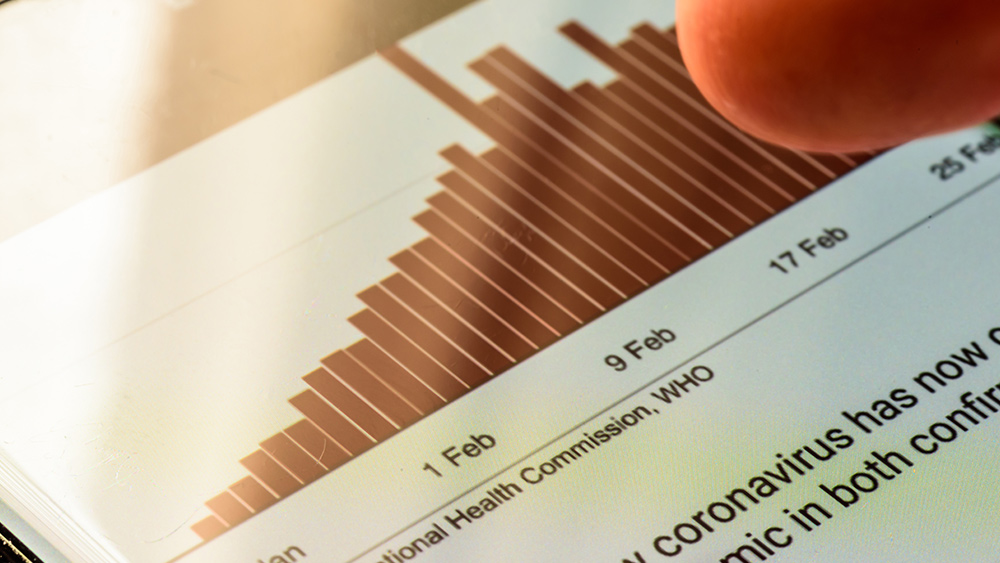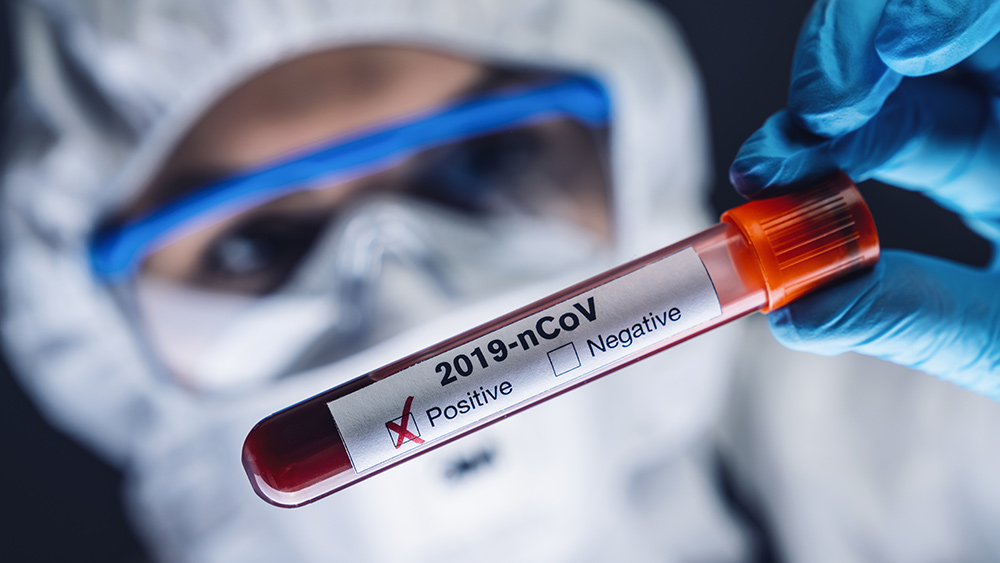Coronavirus model expects over 65,000 deaths in the summer – easing restrictions too soon may spark another surge of infections, warn epidemiologists
04/24/2020 / By Ralph Flores

The COVID-19 death toll in the U.S. has more than doubled in a little over a week, according to the latest reports. Based on the running tally from Johns Hopkins University on Wednesday, total deaths in the country now stand at 46,785, an addition of more than 22,000 since April 12.
But a leading U.S. model predicts that fatalities could even reach 65,976 by August – an increase of 10 percent from its previous projection. The University of Washington’s Institute for Health Metrics and Evaluation (IHME), which the White House uses for forward planning, says the rise comes from updated state data. This data now includes nursing home deaths, which officials are now counting as “presumptive positive.”
“By its nature, forecasting is only as accurate and reliable as the data one uses in the modeling. As the quality and quantity of our data increase, we will offer policymakers refined views of the pandemic’s course,” IHME director Christopher Murray said last week in a statement.
Mapping an unknown future
Public health experts often turn to epidemiological models to chart the progression of an infectious disease. In the past weeks, these models have made estimates on how COVID-19 would impact the healthcare system, from how many people would get sick, need a hospital bed or even die from the disease. These have guided public policy and set expectations about the coming days.
The models are also a lightning rod for controversy, especially when used to determine responses to the pandemic. In his show, Rush Limbaugh said that the models are filled with “wild-ass numbers.”
“The minute I hear anybody start talking about models and modeling, I blanch,” he told his listeners at the end of March.
Others have also joined the chorus. The latest of these being Ron Paul, who argued in his weekly column that countries like Sweden, which held off on implementing a total lockdown, are faring no worse than countries that have measures in place.
“Sweden’s deaths-per-million from coronavirus is lower than in many lockdown countries,” he wrote. Currently, Sweden has 16,755 total COVID-19 cases and 2,021 deaths – the highest in the Nordic region – and fatalities have surpassed recoveries by a wide margin.
Having to fight public suspicion on the accuracy of these models is nothing new. In fact, epidemiologists are caught between a rock and a hard place when presenting their models: On one hand, the figures they present create hype and hysteria; on the other hand, the actual figures after acting on the models invite criticism, with many saying that the original figures were exaggerated to begin with.
Different models, different outcomes
It also doesn’t help that the five leading epidemiology models don’t necessarily agree with each other. Most models agree that the U.S. is either currently past or near the peak number of deaths for the epidemic, as long as current restrictions stay in place; however, their range estimates for total deaths greatly vary. Some models are predicting a low of 60,000 and some have figures as high as 100,000.
For infectious disease experts, mapping the outbreak is challenging at this point because they rely on many uncertain inputs. Many of the descriptive facts about COVID-19, for instance, are still unclear. Healthcare officials are still trying to fully understand the virus’s rate of transmission (R0) and mortality, the actual caseload for both active infections and recoveries, and even the actual number of deaths.
“It’s like trying to repair a car while it’s still running,” admitted Andrew Noymer, a public health professor at the University of California, Irvine.
The IHME model compares data from the U.S. with those of countries that are further along in their epidemic. This allows modelers to plot a course of how COVID-19 will impact the country, without the need to rely on too many facts. Many critics, however, have decried the use of this model, with some saying that it lacks the reliability of a predictive tool.
“The fact that they [the IHME] overshot will be used to suggest that the government response prevented an even greater catastrophe, when in fact the predictions were shaky in the first place,” explained Ruth Etzioni of the Fred Hutchinson Cancer Center in Seattle.
In comparison, other models – like those from Northeastern University and Columbia University – use epidemiological data, such as estimates for the transmission rate of the virus, the time it takes for people to recover and its risk for serious illness or death for at-risk populations. In theory, these methods mean more accurate representations of data; they also rest on a shaky understanding of the virus, which affects their projections.
“We want them to provide more information than they can,” explained Jeffrey Shaman, one of the authors of the Columbia model. “We have uncertainty on top of uncertainty on top of uncertainty.”
Despite these challenges, epidemiological models remain to be the best guide for policymakers and healthcare officials alike as they plan their next steps amid the ongoing pandemic.
Coronavirus models have yet to factor easing lockdown
In comparison, the IHME model had a more harrowing prediction last month, with range estimates for August reaching over 90,000 deaths. The number has since dropped to 82,000 on April 7 – dropping by another 20,000 days later.
According to modelers, the dip in projected deaths meant that social distancing measures were working – and that all states shall continue to implement these policies. But with states like Georgia and South Carolina looking to scale back their lockdown measures, health officials are concerned that prematurely relaxing these measures can lead to more cases in the future.
“If people start to go back to normal social interaction or even progressively go back, the risk of transmission will go up … and then you go back to the sort of exponential rise that was happening before we put in social distancing,” Murray said. “The risk is very great for resurgence from these early openings.”
This week, Georgia Gov. Brian Kemp announced that a number of indoor facilities, including bowling alleys, salons and barbershops, which have been closed across the state since April 2, will be allowed to reopen Friday.
President Donald Trump said on Wednesday that while he is impatient for businesses to open, he thought that Kemp went too far with his decision.
“I think it’s too soon,” he said.
Learn more about the ongoing coronavirus pandemic at Pandemic.news.
Sources include:
Tagged Under: business, coronavirus, covid-19, deaths, Diseases, economy, epidemiological model, Flu, government, infections, lockdown, lockdowns, mortality rate, outbreak, pandemic, policies, restrictions, social distancing, transmission rate, virus
RECENT NEWS & ARTICLES
Pandemic.News is a fact-based public education website published by Pandemic News Features, LLC.
All content copyright © 2018 by Pandemic News Features, LLC.
Contact Us with Tips or Corrections
All trademarks, registered trademarks and servicemarks mentioned on this site are the property of their respective owners.





















